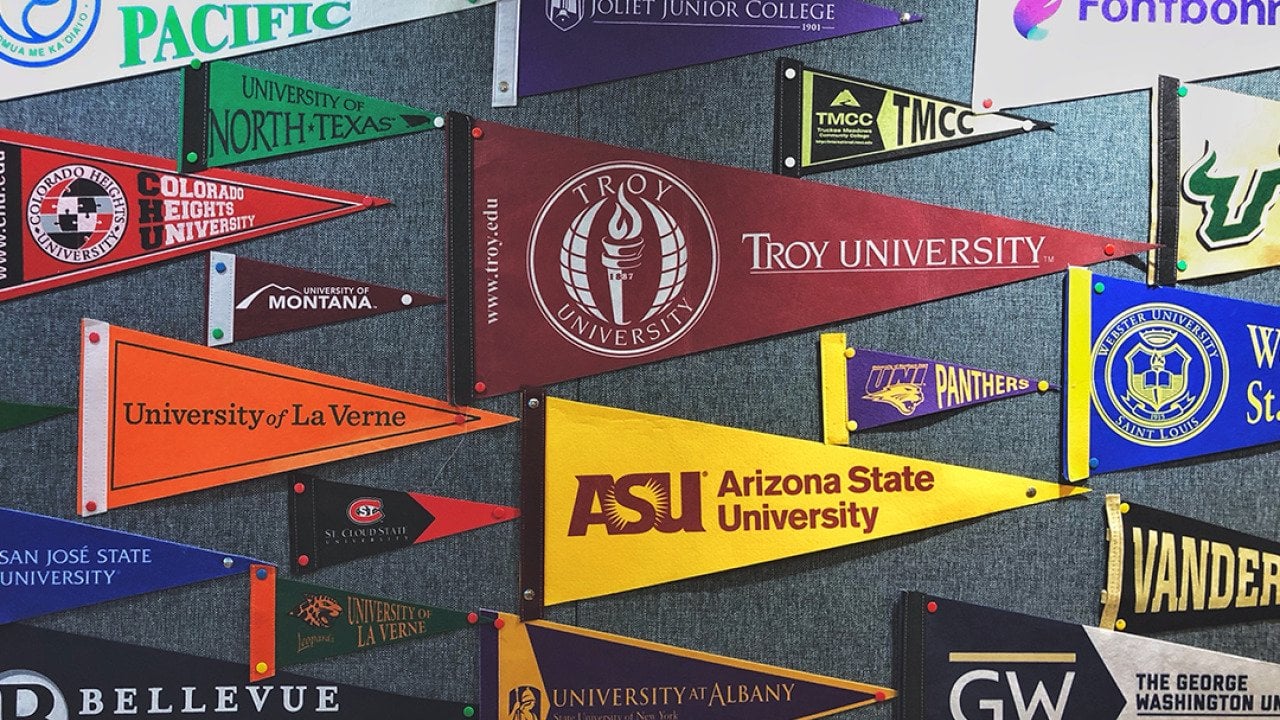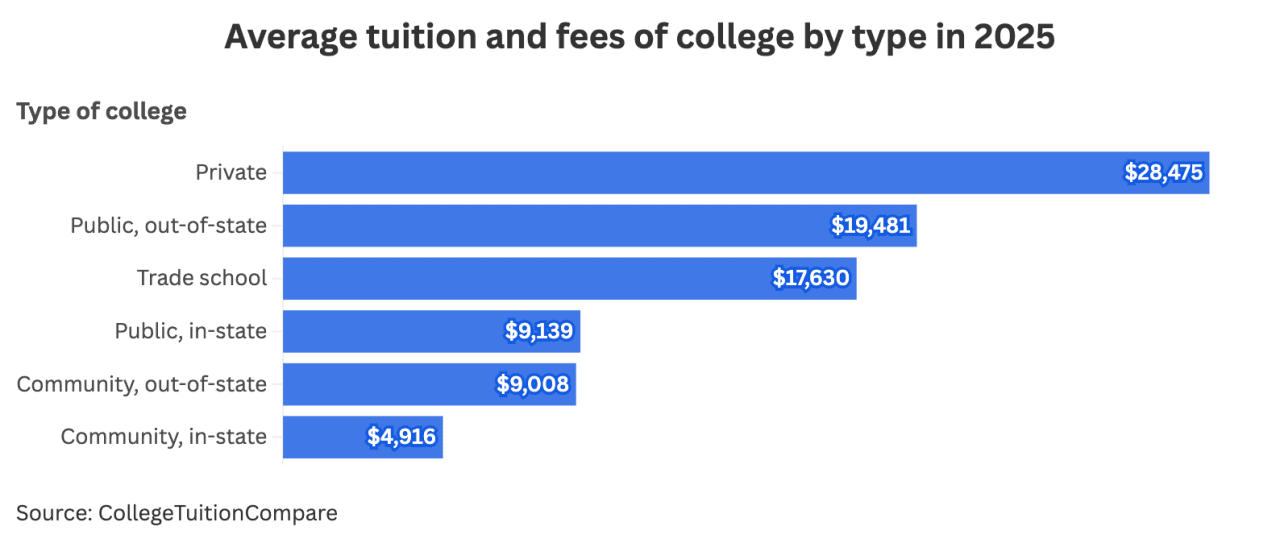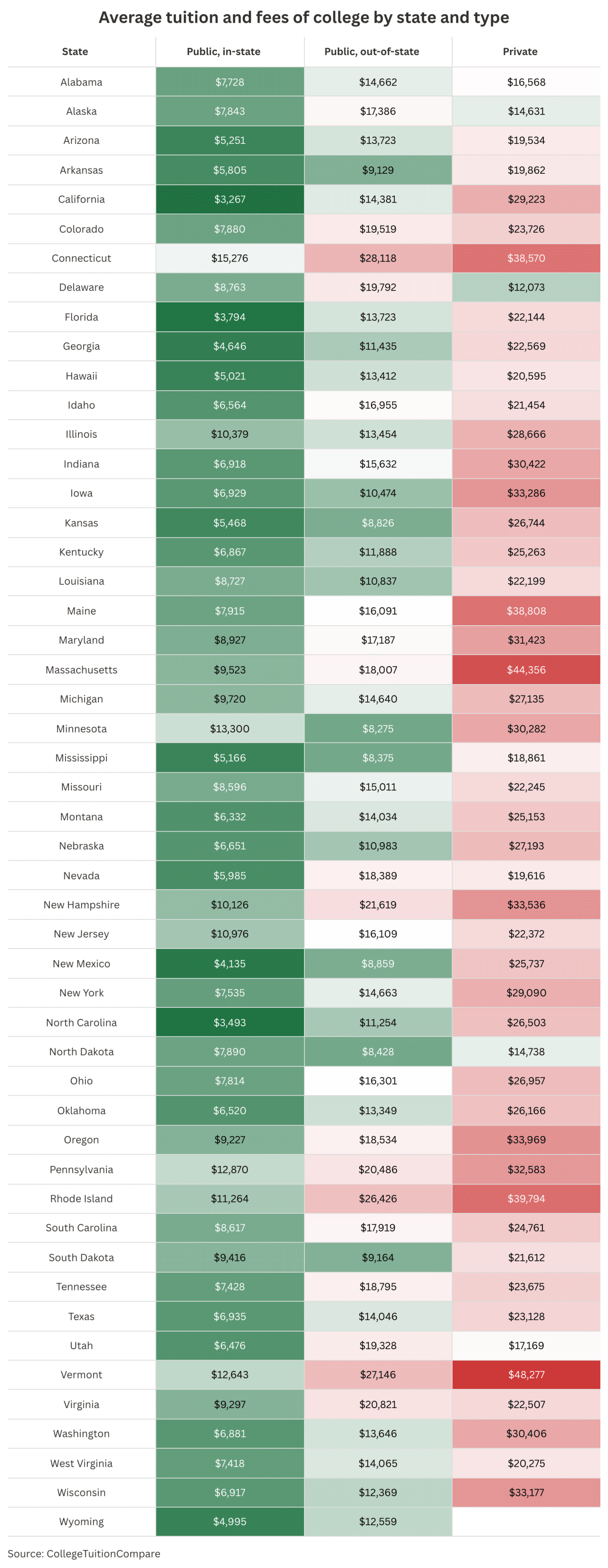Public vs. private: Mapping the 2025 college tuition divide

Red Herring // Shutterstock
Public vs. private: Mapping the 2025 college tuition divide
For families and individuals beginning to navigate the path to higher education, the cost of tuition often stands out as one of the largest barriers to entry. This issue becomes particularly apparent when looking at private vs. public institutions, especially when crossing state lines. By developing an understanding of the financial landscape for colleges and universities across the country, you can make a more educated decision on the best institution for your budget and needs.
To that end, Scholarship Institute has compiled the most up-to-date college tuition information in the U.S. By highlighting data from the National Center for Education Statistics and College Board, you’ll be armed with all the data you need to inform your decision.
The current state of American college tuition
There are two primary types of college institutions within the United States: public and private. It may come as no surprise, but costs for these two options differ wildly.

Scholarship Institute
As outlined by CollegeTuitionCompare, average tuition fees in 2025 for private institutions have reached nearly $30,000. Public institutions, on the other hand, fall between $9,000-$20,000 in 2025 depending on whether you are an in-state or out-of-state student.
It’s worth noting that the above data for costs does not include other living and education expenses such as room, board, books, and personal expenses. This additional cost falls between $15,000-$20,000 per year on average, according to the Education Data Initiative. States with robust higher-education funding models do their best to keep costs low. Other states have shifted more costs onto students.
How tuition varies by state
The state you live in plays a major role in the cost you can expect from institutions of higher learning. In a study updated by CollegeTuitionCompare in 2025, costs vary drastically, but Connecticut, Pennsylvania, Vermont, Rhode Island, and Massachusetts are among the most expensive for public institutions. It’s worth noting that many of these states also top the leaderboard for private schools, but all the most expensive states with the exception of Vermont, contain an Ivy League school, which partially skews the data:

Scholarship Institute
From a regional perspective, the aforementioned data shows that the Northeast tends to have the highest average public college tuition, whereas the South and Mountain West tend to have the lowest. Costs for private institutions follow the same trend.
Public vs. private tuition: What’s the difference?
Given the large difference in average price between public and private institutions, it’s natural to wonder what the cause is. Overall, the answer revolves around funding. Public universities receive significant support from state legislatures, bolstered by funds from taxes and other state revenue-generating measures, which enables them to charge a lower tuition for in-state students. Those coming from out-of-state need to pay a higher rate because they haven’t contributed to the state’s public education system via taxes.
Private universities, further removed from the state government, rely more on tuition revenue and endowments for their funds. That latter portion helps offset costs through increased tuition aid. In a 10-year study from 2013 to 2023 conducted by the National Center for Education Statistics, the average annual tuition for private nonprofit institutions was found to be just under $40,000. However, the net price of attendance, meaning when aid is taken into account, for those same institutions was just shy of $30,000. This means that private nonprofit institutions, on average, saw around $10,000 in aid being disbursed.
Factors influencing tuition costs
Funding sources aren’t the only factors affecting tuition costs. The University of Massachusetts Global outlines numerous additional key factors that can play a role:
- Modality of courses offered: The format in which courses at an institution are offered, namely online vs. in-person, affects costs. Online-only institutions tend to be cheaper given that students can’t access on-campus resources.
- Program types at the institution: The type of program you intend to enroll in will also affect costs. Bachelor’s programs typically cost less than master’s, for example, given the shorter amount of time and fewer units required.
- Military service: Those who have served or are currently serving in the military may be able to enjoy education benefits, depending upon the institution.
- Employer tuition assistance: Those working full-time or part-time and looking to enroll in higher education may be able to receive sponsorship benefits from their employer, as many companies partner with universities to offer tuition assistance.
Evaluating value: Affordability after aid
Sticker price on its own is a poor way to estimate value for a university, simply given the number of factors that can impact it. Both public and private institutions can offer substantial aid, whether via the government or an endowment. According to an NECS study from the 2023 school year, the average amount of financial aid relative to reported family income level was revealed:
- Earners at $30,000 and under received $13,591 in assistance
- Earners between $30,001-$48,000 received $13,289 in assistance
- Earners between $48,001-$75,000 received $10,314 in assistance
- Earners between $75,001-$110,000 received $6,086 in assistance
- Earners above $110,001 received $3,504 in assistance
Depending on the cost of the institution you are considering, as well as your individual income or your family’s current earnings, your net price could end up being significantly lower. This is why taking the time to seek out financial aid, typically through a scholarship or grant, can significantly reduce the cost of a college student’s education.
Choosing wisely: What prospective students should consider
Choosing the right college or university is a major decision and not one that should be made abruptly. Beyond the net price vs. the sticker price, there are eight primary considerations, as outlined by the College Board, to take into account when choosing a school:
- The size of the school
- The location of the school in its state
- The distance the school is from home
- The available majors and classes
- The housing options offered
- The makeup of the student body
- The extracurricular activities offered
- The atmosphere of the campus
By considering each of the above factors in conjunction with the total cost you are likely to pay, you can make an educated decision on the best college.
The future landscape of college tuition
Public and private college and university tuition in the United States is complex, shaped by state funding priorities, endowment availability, regional economics, and more. While public colleges typically offer lower in-state tuition, private institutions often offer substantial aid which makes the choice less clear.
Despite data from NCES, College Board, and other sources showing that costs remain high across the nation, affordability is still just one factor among many. Beyond cost, students must also consider factors like long-term outcomes and personal perceived value to make the right choice. However, examining both sticker and net price of a potential institution is a useful starting point for identifying where a prospective student may spend their next few years.
This story was produced by Scholarship Institute and reviewed and distributed by Stacker.
![]()



